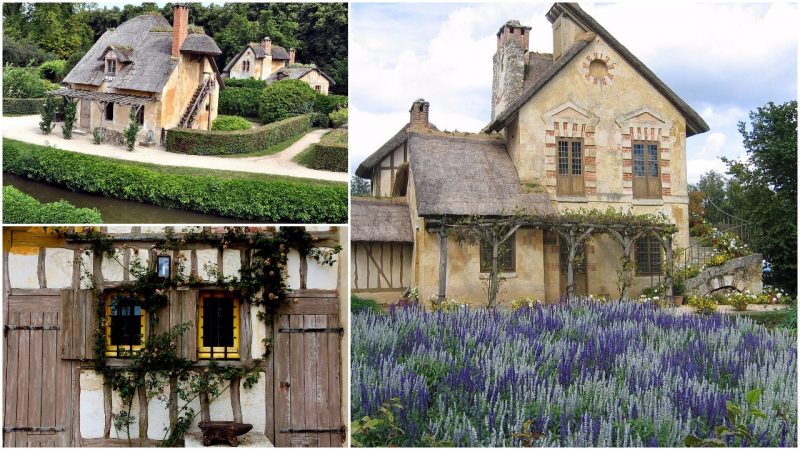It’s a common fact that Marie Antoinette was not a stranger to the leisure lifestyle: in fact, she practically invented it. However, living at the royal palace in Versailles surely sounds alluring, but then again all that glitz along with the pressure and responsibility of being a Queen of France can be overwhelming, especially when the queen in question was not “crazy” about responsibilities. So what one needs when drowning in champagne, gourmet desserts, endless partying and gambling becomes dull is a nice rustic retreat in the country. Regarding the fact, Madam Deficit was not a favorite among the French people; it was not like she could freely roam through the French countryside. However, the perks of having the nation’s budget in her pockets allowed her to bring the country over in Versailles.
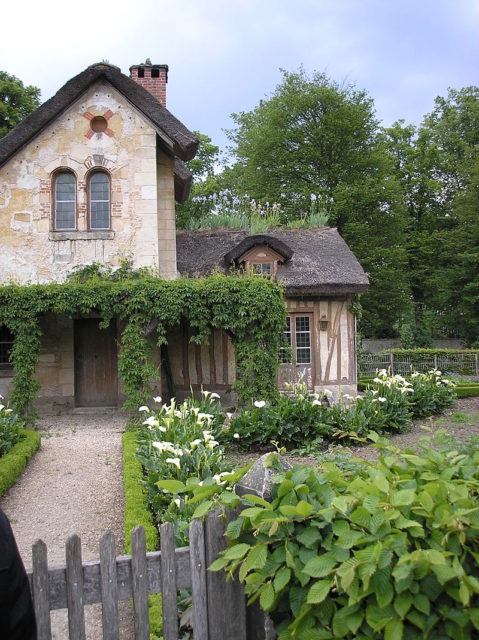
The Hameau de la Reine (French for Queen’s Hamlet) was a fairy tale rustic retreat in the park of the Château de Versailles, built for Marie Antoinette as her private escape from all the stress of being Queen of France. Inspired by a wave of naturalism in art, architecture, and garden design, the Hameau de la Reine was constructed between 1782 and 1783 by the Queen’s favored architect, Richard Mique. As you can imagine, the Queen’s Hamlet was not your average getaway, but a complete interpretation of a rustic village. It was adorned with a meadowland where Marie Antoinette could take strolls and ease her mind, with lakes and streams, a classical Temple of Love on an island with fragrant shrubs and flowers, an octagonal belvedere, with a neighboring grotto and cascade. The Hamlet consisted of twelve cottage, from which five were exclusively reserved for “her majesty,” while the other seven had a functional purpose and were used effectively for agriculture.
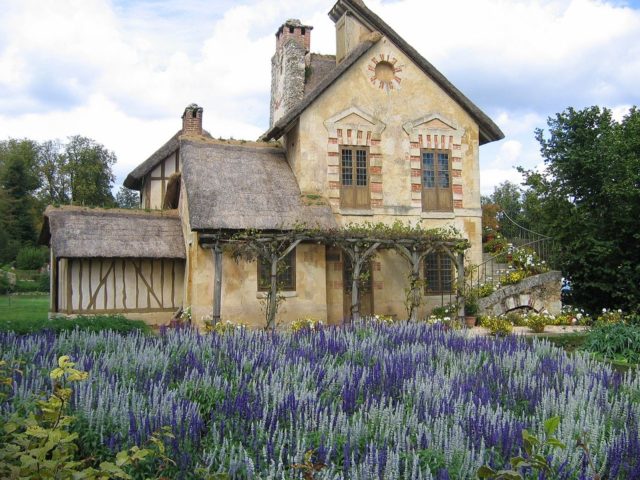
The idyllic picturesque design of the Queen’s Hamlet was inspired by an actual rustic “village,” the Hameau de Chantilly, with half-timbered façades and reed-thatched roofs. A wave of naturalism and an affinity towards the “simple” life was sweeping across France in the 18th century. French aristocrats loved to act as shepherds and shepherdesses, while still enjoying the comforts of their social position. This idealism of the natural life came from the highly influential works of Jean-Jacques Rousseau, who emphasized the role of Nature. For one thing, history and Sofia Coppola’s biopic movie have taught us that Marie Antoinette was not only following trends but also she invented them. So, when the stress of being constantly surrounded by the Courtiers at the Palace of Versailles was too much for the Queen, she found her escape in her perfect little village where she could indulge in the perks of a simple, peasant life. Here, the Queen would dress up as a young shepherdess and act like a commoner, while surrounded by the comforts of a royal lifestyle that have had real impoverished peasants from all over France. This (not so) subtle mockery of the simple people will ultimately be the last drop in the cup that will lead to the French Revolution.
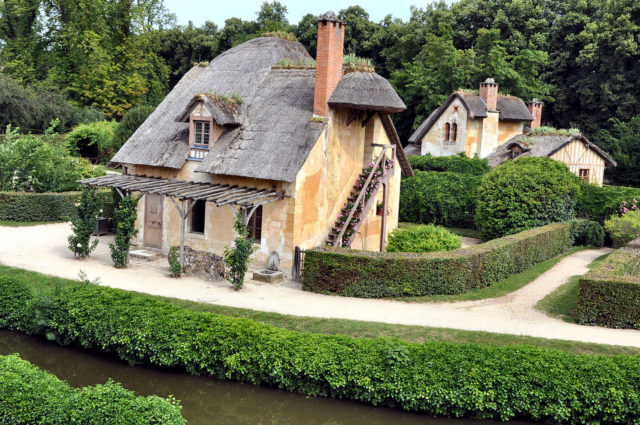
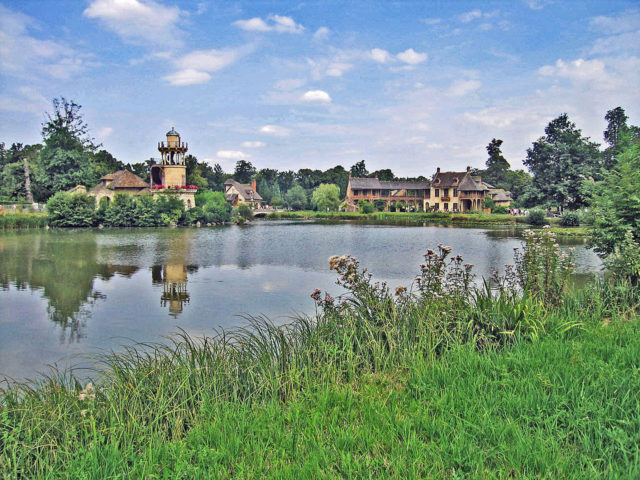
The queen enjoyed acting as a tableau vivant as if she were part of a painting. She brought her idyllic, picturesque village to life by stocking the barn with animals, and bringing in “simple” people, such as milkmaids and herdsmen, to act like residents of the Hamlet. Marie Antoinette would stroll around her perfect world in simple shepherdess garb with her children, part of an idealized Nature. Her closest friends joined her in her ornamental village, where they also enjoyed pretending to live a simple life.
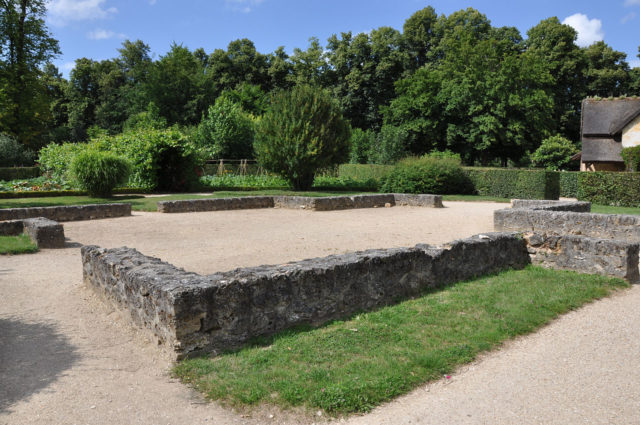
Already resentful of Marie Antoinette for her profligate spending in times of economic depression, the secrecy surrounding her life of amusement led to suspected hedonism and scandal. It was rumored that Marie Antoinette had lovers, and they met at the Hameau, a surreal place that was completely her own. The extravagance and subtle mockery of peasant life did not help Marie Antoinette’s already suffering image.
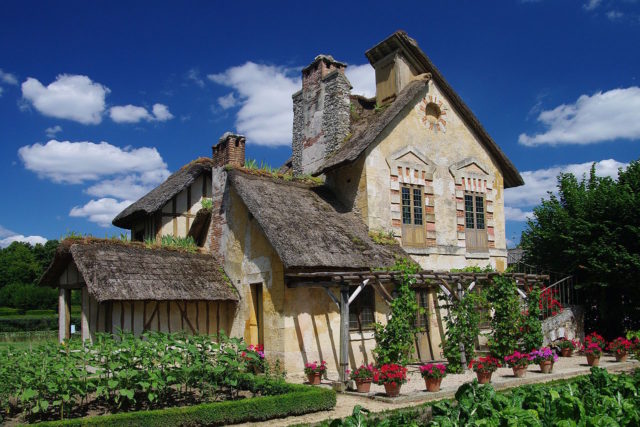
In spite of its idyllic appearance, the hamlet was a real farm, fully managed by a farmer appointed by the Queen, with its vineyards, fields, orchards and vegetable gardens producing fruit and vegetables consumed at the royal table. According to the instructions of the Queen, animals from Switzerland were raised on the farm. For this reason, the place was often called “the Swiss hamlet.”
The Queen sought refuge in peasant life, milking cows or sheep, which were carefully maintained and cleaned by the servants. Dressed as a peasant, in a muslin dress and straw hat with a light switch in her hand, accompanied by her ladies, she used buckets of Sèvres porcelain specially decorated with her arms by the Manufacture Royale.
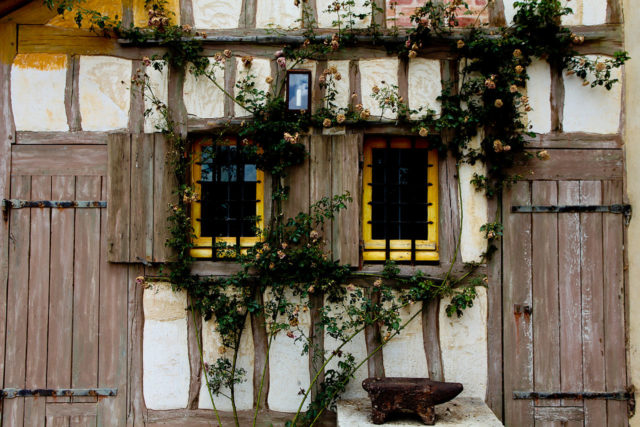
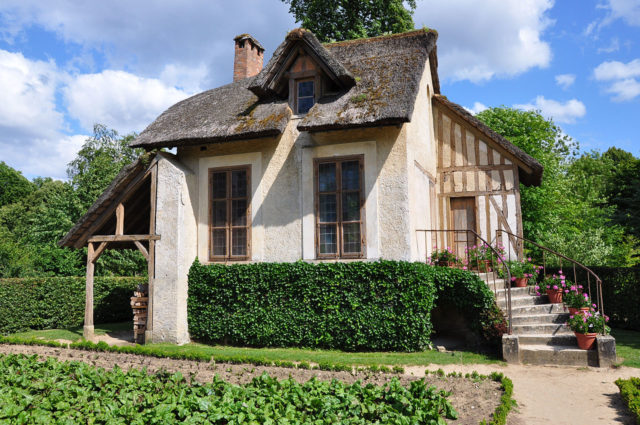
The Boudoir, pictured above is the smallest structure, and it was nicknamed “the little house of the Queen.” Marie Antoinette would retire here by herself, or else with one or two of her friends. The boudoir was altered slightly during the Second Empire, but its small construction has remained to this day.
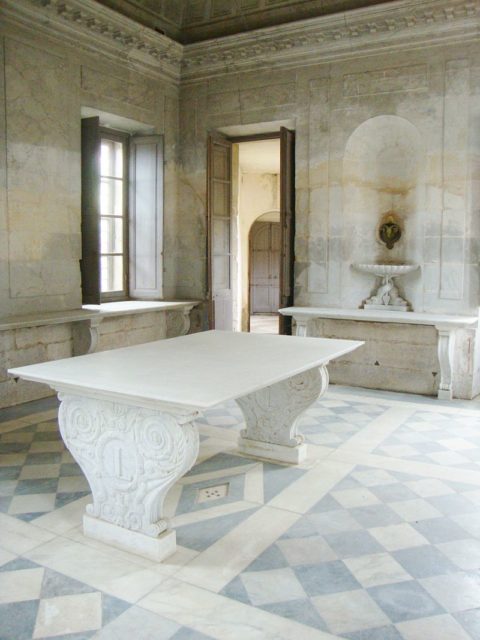
The hamlet seemed completely rustic and natural from the outside, while the Rococo interior provided the desired comfort and luxury of the Queen and her friends. The place was completely enclosed by fences and walls, and only intimates of the Queen were allowed to access it.
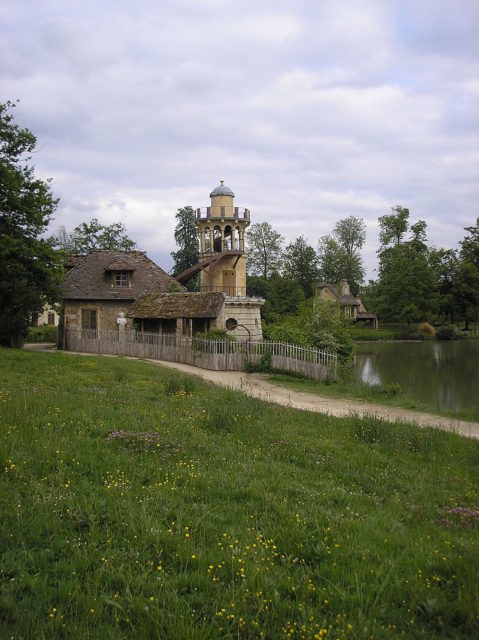
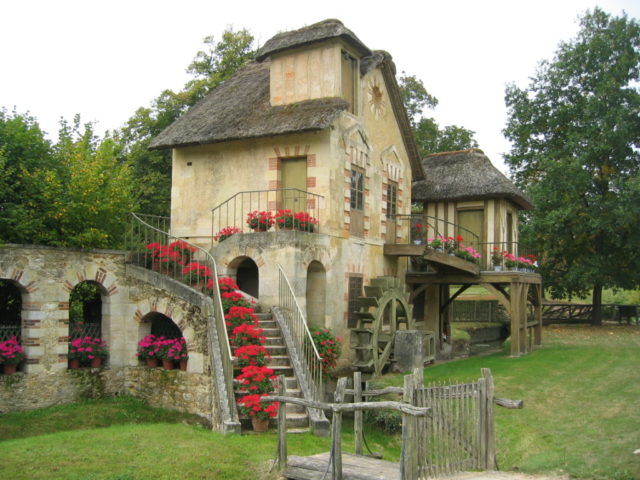
The Mill, built and fitted from 1783 to 1788, was never used for grinding grain, contrary to what is often argued. The wheel is driven by a stream derived from the Grand Lake and is only a decorative element. No mechanism or wheel was installed in the factory. The interior decoration was simple and neat. This structure is one of the most picturesque of the Hamlet. Each façade of the building is decorated slightly differently. The mill also served as a laundrette.
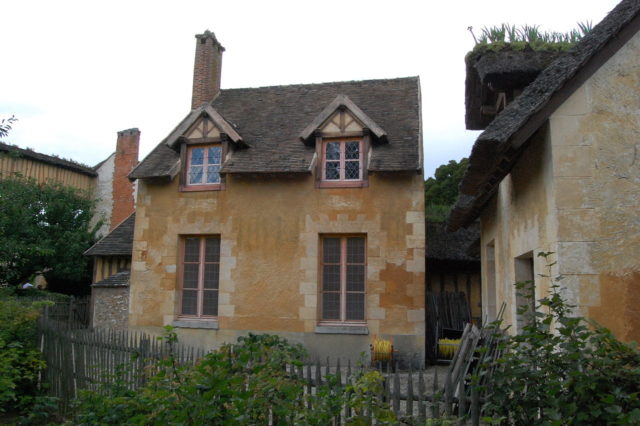
During the Revolution, “a misogynistic, nationalistic and class-driven polemic swirled around the Hameau, which had previously seemed a harmless agglomeration of playhouses in which to act out a Boucher pastorale.” The queen was accused by many of being frivolous and found herself a target of innuendos, jealousy, and gossip throughout her reign. Although for Marie Antoinette, the Hameau was an escape from the regulated life of the Court at Versailles, in the eyes of French people, the queen seemed to be merely amusing herself.
